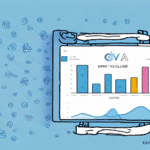How to Use Cart Abandonment Emails to Increase Your Conversion Rate
In the competitive world of e-commerce, one of the most significant challenges businesses face is cart abandonment. This occurs when a customer adds items to their virtual shopping cart but leaves the site without completing the purchase. The reasons for cart abandonment vary widely, from unexpected shipping costs to distractions that divert the customer's attention. Fortunately, there is a strategy to recover these lost sales: implementing effective cart abandonment emails. This article explores the importance of these emails and how to utilize them effectively to boost your conversion rates.
Understanding the Importance of Cart Abandonment Emails in E-Commerce
Cart abandonment is a pervasive issue in e-commerce, with studies indicating that up to 70% of online shopping carts are abandoned before the purchase is completed. This represents a substantial loss in potential revenue for businesses. Cart abandonment emails are targeted messages sent to customers who have left items in their cart without finalizing the purchase. These emails aim to remind customers of their pending items and encourage them to return and complete the transaction.
According to a SaleCycle report, the average open rate for cart abandonment emails is approximately 45%, with a click-through rate of around 21%. These metrics highlight the effectiveness of cart abandonment emails in re-engaging customers and reclaiming lost sales. By implementing a strategic cart abandonment email campaign, businesses can significantly enhance their conversion rates and overall revenue.
Common Causes of Cart Abandonment and How to Address Them
Unexpected Shipping Costs
One of the primary reasons customers abandon their carts is the unexpected addition of shipping costs at checkout. To mitigate this, businesses should make shipping fees transparent from the beginning of the shopping process. Offering free shipping or setting minimum order amounts for free shipping can also reduce cart abandonment rates.
Mandatory Account Creation
Requiring customers to create an account before making a purchase can deter potential buyers. Providing a guest checkout option simplifies the process and minimizes barriers to completing a purchase.
Complicated Checkout Process
A lengthy or complex checkout process can frustrate customers, leading them to abandon their carts. Streamlining the checkout process by minimizing the number of steps and eliminating unnecessary fields can enhance the user experience and reduce abandonment rates.
Lack of Trust and Security Concerns
Customers may hesitate to provide personal and payment information if they doubt the security of a website. Displaying trust badges, secure payment options, and clear privacy policies can build trust and reassure customers about the safety of their transactions.
Crafting Effective Cart Abandonment Emails: Tips and Best Practices
Personalization
Personalization is crucial in cart abandonment emails. Including the customer's name and showcasing the specific items they left in their cart makes the email feel more individualized and relevant. Utilizing dynamic content to recommend additional products based on the customer's browsing history can further enhance personalization.
Compelling Subject Lines
A strong subject line is essential to encourage customers to open the email. Phrases like "Don't Miss Out on Your Items!" or "Complete Your Purchase and Save!" can create a sense of urgency and interest.
Clear Calls-to-Action (CTAs)
Including clear and prominent CTAs, such as "Complete Your Order" or "Return to Your Cart," guides customers toward taking the desired action. Ensuring that the CTA buttons stand out visually can increase click-through rates.
Visually Appealing Design
The design of the email should be clean and visually appealing. Using high-quality images of the abandoned products and maintaining a consistent brand aesthetic can capture the customer's attention and encourage engagement.
Timely Follow-Ups
Sending the first cart abandonment email within a few hours of the customer leaving their cart maximizes its impact. Follow-up emails can be scheduled at strategic intervals, such as 24 hours and 72 hours later, to gently remind customers without overwhelming them.
Personalizing Your Cart Abandonment Emails for Maximum Impact
Dynamic Product Recommendations
Incorporating dynamic product recommendations based on the customer's browsing and purchasing history can make the email more relevant and enticing. This approach not only reminds customers of the items they left behind but also introduces them to other products they may be interested in.
Using Customer Names
Addressing customers by their names in the subject line and throughout the email fosters a personal connection. For example, "John, you left something behind!" makes the communication feel more tailored and engaging.
Exclusive Discounts and Offers
Offering personalized discounts or special offers, such as a 10% off coupon for completing the purchase, can incentivize customers to return and finalize their orders. Tailoring these offers based on the customer's cart value or purchase history can further enhance their effectiveness.
Timing is Everything: When to Send Cart Abandonment Emails for Best Results
The timing of cart abandonment emails plays a crucial role in their effectiveness. If emails are sent too quickly, customers may feel pressured; if sent too late, the initial intent to purchase may have faded.
Immediate Follow-Up
Sending the first abandonment email within an hour of cart abandonment captures the customer's interest while the shopping experience is still fresh in their mind.
Strategic Follow-Ups
Implementing a sequence of follow-up emails can help re-engage customers who haven't responded to the initial email. For instance, a second email sent 24 hours later and a final reminder 72 hours after abandonment can gently prompt the customer to complete their purchase.
Analyzing Customer Behavior
Segmenting customers based on their behavior and tailoring the timing of emails accordingly can improve engagement rates. For example, frequent shoppers might respond better to different timing compared to first-time visitors.
Creating Urgency in Your Cart Abandonment Emails to Encourage Action
Limited-Time Offers
Incorporating limited-time promotions, such as "Save 20% if you purchase within the next 24 hours," creates a sense of urgency that can motivate customers to act quickly.
Highlighting Low Stock Levels
Informing customers that the items in their cart have limited stock available can encourage immediate action to avoid missing out on the desired products.
Countdown Timers
Including countdown timers in emails adds a visual element of urgency, reinforcing the time-sensitive nature of the offer and prompting quicker responses.
Measuring the Success of Your Cart Abandonment Email Campaigns
To ensure the effectiveness of your cart abandonment email strategy, it's essential to track and analyze key performance metrics.
Open Rates
Monitoring open rates helps assess how compelling your subject lines are and whether your emails are being noticed by customers.
Click-Through Rates (CTR)
CTR indicates how well your email content and CTAs are resonating with customers, driving them to return to their carts.
Conversion Rates
Conversion rates measure the percentage of customers who complete their purchases after receiving the cart abandonment emails, directly reflecting the campaign's success.
Revenue Generated
Tracking the revenue generated from recovered sales provides a clear indication of the financial impact of your cart abandonment email strategy.
Time to Conversion
Analyzing the time it takes for customers to complete their purchases after receiving an abandonment email can offer insights into the optimal timing for future communications.
Advanced Techniques for Maximizing the Effectiveness of Your Cart Abandonment Emails
A/B Testing
Conducting A/B tests on different email elements, such as subject lines, content layouts, and CTA placements, can identify the most effective strategies for engaging customers.
Segmentation
Segmenting your email list based on customer behavior, purchase history, and other demographics allows for more targeted and relevant communications, enhancing the likelihood of conversion.
Integration with Other Marketing Channels
Combining cart abandonment emails with other marketing efforts, such as retargeting ads or social media campaigns, can create a cohesive and multi-touchpoint approach that reinforces the message and increases conversion opportunities.
Case Studies: Real-World Examples of Successful Cart Abandonment Email Campaigns
Examining real-world case studies can provide valuable insights into effective cart abandonment email strategies. For instance, Shopify showcases how businesses have successfully reduced cart abandonment rates by implementing personalized email sequences and offering timely incentives.
Another example is BigCommerce, which highlights the impact of A/B testing on optimizing email content and improving conversion rates.
Integrating Cart Abandonment Emails with Other Marketing Channels for Increased ROI
To maximize the return on investment (ROI) of your cart abandonment emails, integrating them with other marketing channels can create a synergistic effect. For example:
- Retargeting Ads: Display ads on social media or other websites featuring the products left in the cart can remind customers of their interest and encourage them to return.
- Social Media Campaigns: Engaging content on platforms like Facebook and Instagram can supplement email efforts, keeping the products top-of-mind.
- SMS Notifications: Sending text messages with personalized offers can provide an additional touchpoint to prompt action.
By creating a cohesive multi-channel marketing strategy, businesses can reinforce their message and reach customers through their preferred communication channels, enhancing the overall effectiveness of their cart abandonment efforts.
Key Metrics to Track When Analyzing Your Cart Abandonment Email Campaigns
Tracking specific metrics is essential to evaluate the performance of your cart abandonment email campaigns and identify areas for improvement.
- Open Rates: Indicates the effectiveness of your subject lines and the overall interest in your emails.
- Click-Through Rates (CTR): Measures how compelling your email content and CTAs are in driving customer engagement.
- Conversion Rates: Reflects the percentage of customers who complete their purchases after receiving the emails.
- Revenue Generated: Shows the financial impact of your campaigns by tracking the sales recovered through abandoned carts.
- Bounce Rates: Helps identify deliverability issues that may prevent your emails from reaching customers.
Regularly analyzing these metrics enables businesses to refine their strategies, optimize content, and enhance the overall effectiveness of their cart abandonment email campaigns.
Common Mistakes to Avoid When Implementing a Cart Abandonment Email Strategy
While cart abandonment emails are a powerful tool, certain mistakes can undermine their effectiveness. Avoid the following common pitfalls:
- Sending Too Many Emails: Overloading customers with frequent reminders can lead to annoyance and diminish the likelihood of conversion.
- Insufficient Personalization: Generic messages lack relevance and fail to engage customers effectively. Personalizing content based on customer behavior is crucial.
- Weak Calls-to-Action: Vague or unappealing CTAs do not motivate customers to take action. Clear and compelling CTAs are essential for driving conversions.
- Ignoring Mobile Optimization: With a significant number of users accessing emails on mobile devices, ensuring that your emails are mobile-friendly is vital for engagement.
- Neglecting to Test and Optimize: Failing to experiment with different email elements and refine your approach based on performance data can limit the effectiveness of your campaigns.
By being aware of and avoiding these common mistakes, businesses can enhance the success of their cart abandonment email strategies and better recover lost sales.
Conclusion: Why You Need to Start Using Cart Abandonment Emails Today
In today's highly competitive e-commerce landscape, every lost sale represents a missed opportunity. Implementing a strategic cart abandonment email campaign is essential for recovering these abandoned sales, increasing conversion rates, and driving revenue growth. By understanding the reasons behind cart abandonment, crafting personalized and timely emails, and continuously optimizing your approach based on performance metrics, businesses can effectively turn potential losses into profitable conversions. Don't let abandoned carts hinder your success—start leveraging cart abandonment emails to maximize your e-commerce potential today.




















